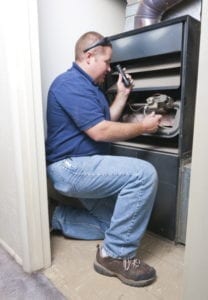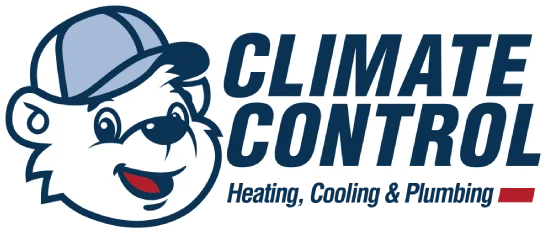5 Common Gas Furnace Safety Issues

When it comes to an air conditioning or heating system, safety is always at the top of the list. Homeowners not only want systems that perform greatly, provide excellent indoor air quality and reduce energy bills; but they want their heating & air conditioning to be safe for them and their loved ones.
With heating systems there are many choices from mini-splits to heat pumps to natural gas furnaces. Some are ductless, some are electric, some have a pilot light and use flammable/combustible gas to build-up heat in the home. Regular furnace maintenance is key to any system, having consistent seasonal tune-ups from a reputable company in your service area and keeping the furnace filter changed can help keep your HVAC system running correctly and safely.
One of the most effective furnace safety tips and means to keeping your family safe when using a gas furnace or water heater is to have carbon monoxide detectors placed throughout the home, with fresh batteries installed on a regular basis. If your HVAC system develops a CO2 gas leak and you do not have carbon monoxide detectors installed in your home you run the risk of being exposed to carbon monoxide poisoning.
Natural gas furnaces, as well as water heaters, are hugely popular and are used across the country to heat homes in winter months, and any HVAC system that utilizes a gas furnace will come with some safety concerns that homeowners should be aware of.
1. Heat Exchanger Cracks
As your furnace begins to age, you should keep an eye on the heat exchanger. This is the component that’s responsible for heating the air. It constantly expands and contracts during operation, and over time, that can lead to cracks and deterioration. If you notice cracks in your heat exchanger, stop running it and immediately call for furnace repairs in Independence, MO, as it can cause a carbon monoxide leak or other serious problems.
2. Flue Pipe
Cracks or corrosion in the flue pipe are equally as dangerous as a cracked heat exchanger. The flue pipe’s purpose is to vent out carbon monoxide and exhaust from the furnace. If the flue is cracked or corroded, those poisonous gasses can flow into your home!
Also, before you fire up the furnace for the first time every season, make sure to have the flue checked for obstructions. It’s not uncommon for birds to build their nests inside the flue. That can restrict airflow and lead to fire hazards.
3. Clogged Air Filters
The air filter is one of the most commonly forgotten parts of your furnace. Yet, neglecting to change it can be dangerous.
Dust and dirt will gradually clog the air filter (as it should) and impede air flow, but you need to remember to have it changed roughly every three months. A clogged air filter will restrict airflow, leading to lowered efficiency, overheating, and possibly carbon monoxide leaks.
4. Dirty Gas Burners
Over time, the gas burners will gather soot and dirt. This can cause older furnaces to burn the fuel at lower temperatures, and that will affect the efficiency of your furnace. It can also prevent the furnace from working properly at all.
If the flame coming from the gas burner is orange or red rather than blue, it’s an indication that the gas burners need cleaning.
5. Gas Smells
There’s no time where the smell of gas around your furnace is something you should ignore. If you smell gas in your home, leave the house first and then call a professional immediately. They’ll instruct you on how (or if) you should attempt to turn off the gas from outside your home and what other steps to take.
There are times where you may smell some gas around the furnace and find that it’s harmless. The real threat is when you smell gas coming from the air vents because that indicates a cracked heat exchanger. Regardless, we suggest calling a professional instead of guessing at what the problem might be.
It’s never too late in the season to have your furnace inspected for maintenance. Contact Climate Control Heating & Cooling today to schedule a service.

